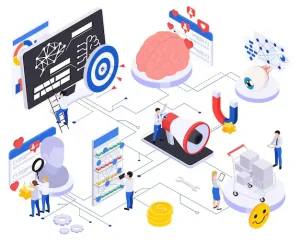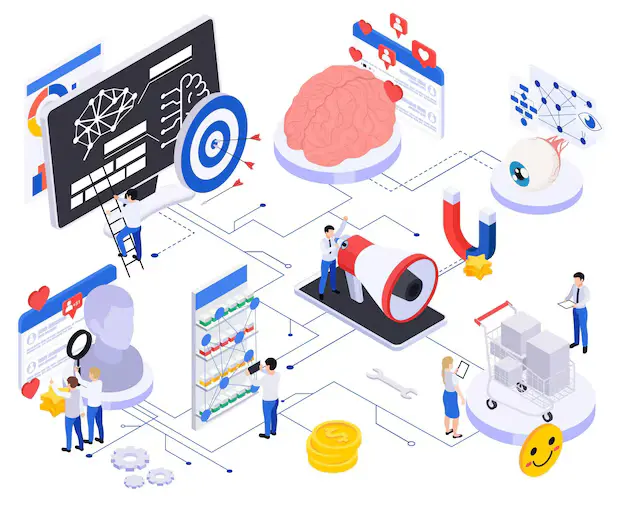What is Neuromarketing?
Neuromarketing is the study of how the brain responds to marketing stimuli. By using advanced technologies such as functional MRI (fMRI), electroencephalography (EEG), and eye-tracking, businesses can analyze brain activity, emotional reactions, and subconscious preferences. This data helps marketers design more effective advertisements, product packaging, and brand experiences that resonate deeply with consumers.

How Does Neuromarketing Work?
Neuromarketing focuses on the brain’s decision-making process, which is largely driven by subconscious emotions rather than rational thinking. Here are some key techniques used in neuromarketing:
1. Brain Imaging (fMRI & EEG)
- fMRI (Functional Magnetic Resonance Imaging) tracks brain activity by detecting changes in blood flow. It helps marketers understand which parts of the brain are activated when consumers view an ad or product.
- EEG (Electroencephalography) measures electrical activity in the brain, identifying emotional responses such as excitement, stress, or boredom.
2. Eye-Tracking Technology
Eye-tracking monitors where and how long a person looks at specific elements in an advertisement, website, or product packaging. This helps brands optimize design layouts to capture attention effectively.
3. Facial Coding & Emotion Recognition
AI-driven facial analysis tools detect micro-expressions that reveal a person’s emotional reaction to marketing stimuli, allowing brands to refine their messaging and imagery.
4. Sensory Marketing
Neuromarketing also explores how senses—such as smell, touch, and sound—affect buying behavior. For instance, supermarkets use scents like fresh bread to trigger hunger and increase sales, while luxury car brands use engine sounds to evoke power and excitement.
Real-World Applications of Neuromarketing
1. Advertising Optimization
Major brands like Coca-Cola and Pepsi use neuromarketing to test commercials before launching them. By analyzing brain activity, they determine which ad elements generate the most engagement and emotional connection.
2. Product Packaging & Design
Retailers use neuromarketing insights to design packaging that attracts attention. For example, Pepsi changed its packaging after discovering that consumers subconsciously preferred a particular shade of blue.
3. Pricing Strategies
Retailers use neuromarketing to design price tags that make products seem more affordable. For instance, pricing something at $9.99 instead of $10.00 makes consumers perceive it as cheaper due to the “left-digit effect.”
4. Website & UX Optimization
E-commerce platforms analyze eye-tracking data to ensure important elements like “Buy Now” buttons are placed where users naturally look first.
The Ethical Debate Around Neuromarketing
While neuromarketing offers valuable insights, it raises ethical concerns regarding consumer manipulation. Critics argue that leveraging subconscious triggers may influence consumers without their awareness. To maintain ethical standards, brands should focus on using neuromarketing to enhance customer experience rather than exploit vulnerabilities.
The Future of Neuromarketing
With advancements in AI, big data, and biometric technologies, neuromarketing is evolving rapidly. Future trends include personalized marketing based on real-time emotional analysis, virtual reality (VR) experiences tailored to brain responses, and AI-driven content creation that adapts to user emotions.
Neuromarketing is transforming the way businesses understand and engage with consumers. By tapping into subconscious decision-making processes, brands can create more effective, emotionally resonant marketing strategies. However, the key to success lies in using these insights responsibly—ensuring that marketing efforts enhance, rather than exploit, consumer experiences.






Leave feedback about this